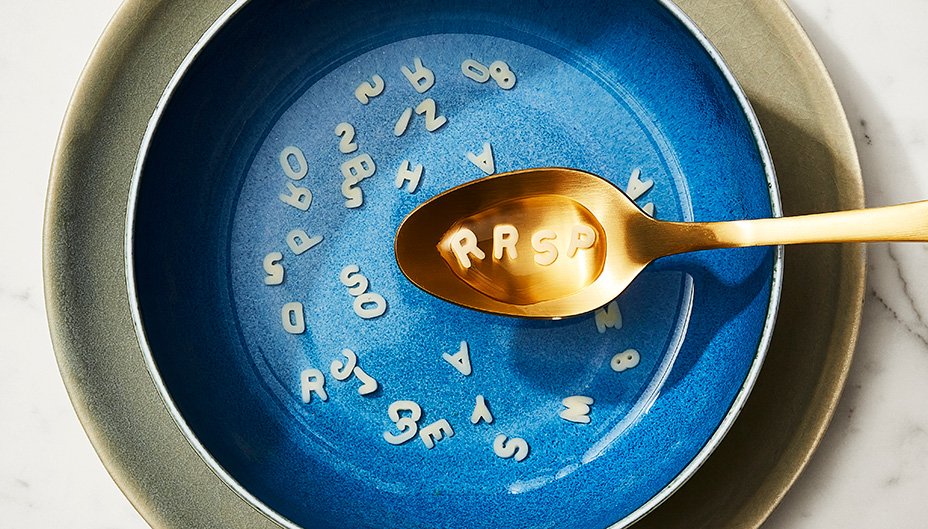What is a Spousal RRSP?
Written by The Content Team
Published on October 5, 2020
minute read
Share:
Updated February 2025
A spousal RRSP is a registered retirement savings plan that names your spouse as the "annuitant" — or account holder — of the plan, even though you might be making the contributions.
The main objective of a spousal RRSP is to shift retirement income from the higher-income spouse to the lower-income spouse. When the lower-income spouse begins to draw on the retirement income, their lower tax rate can be helpful in managing your taxes as a couple. At the same time, the tax deduction on contributions made by the higher-income spouse may allow for more immediate tax relief.
A spouse includes common-law partners of the same or opposite sex as well as legally married spouses.
Benefits of a Spousal RRSP
Here are some reasons you might choose a spousal RRSP:
Tax deduction for a higher income spouse
A higher income spouse receives a tax deduction for contributions made in the tax year, potentially resulting in immediate tax relief.
Tax deferred growth from qualified investments for the lower income spouse
The lower-income spouse can enjoy tax-deferred growth of the shifted income.
Income balancing
Contributing to a spousal RRSP can help to equalize your retirement income as a couple and lower your household income tax at retirement. This can happen when the lower-income spouse withdraws the funds at a lower marginal tax rate.
Contributions past age 71
With your own RRSP, you can't contribute to it after the end of the year in which you turn 71. But, if you have a younger spouse and you still have contribution room available, you can contribute to a spousal RRSP until the end of the year in which your spouse turns 71.
Contribution room
Your ability to contribute to a spousal RRSP is based on your own contribution room. If, for example, you have $15,000 of RRSP contribution room in a year, you may contribute all or a portion of this amount to a spousal plan. The amount of your RRSP deduction would be the sum of the amounts you contributed to both your own plan and your spouse’s plan and cannot be more than your RRSP deduction limit.
If your spouse has contribution room but you don't, only your spouse would be able to make contributions to the spousal plan.
Attribution rules on withdrawals
If you contribute funds to a spousal RRSP and your spouse withdraws funds from the plan — or from any other spousal RRSP — either during the year you made the contribution or in the following two calendar years, you will have to pay the tax on the money withdrawn at your tax rate. The amount attributed back to you (the spousal contributor) for tax purposes only applies to this three-year period.
Let's look at an example:
Let's say you contributed $30,000 four years ago to your spouse's RRSP and $5,000 in the last calendar year.
- if your spouse withdraws $7,500 this year, $5,000 of that will be taxed as part of your income, since you contributed that money in one of the last two calendar years
- the remaining $2,500 would be taxed as part of your spouse's income.
Other considerations
- If either spouse dies, the attribution rules no longer apply.
- Attribution does not apply if, at the time of the withdrawal, you or your spouse were non-residents of Canada or were living separate and apart by reason of the breakdown of your marriage (or common-law relationship).
- Closing the plan and withdrawing all of the funds may trigger attribution (taxes attributed to the spousal contributor).
- Converting the RRSP to a RRIF does not trigger attribution, provided only the minimum amount is withdrawn in the next two calendar years.
If you're preparing for retirement and are focused on creating tax efficiencies, you might be interested in Preparing for Retirement? Focus on Tax Efficiency.
Spousal RRSP Conversion
At the end of the calendar year in which the plan owner (annuitant) turns 71, the spousal RRSP must be collapsed. You can then begin drawing from your retirement income by looking at options such as a spousal RRIF.
For more information about spousal RRSPs, visit the Canada Revenue Agency website at www.canada.ca.
The information provided in this article is for general purposes only and does not constitute personal financial advice. Please consult with your own professional advisor to discuss your specific financial and tax needs.
RBC Direct Investing Inc. and Royal Bank of Canada are separate corporate entities which are affiliated. RBC Direct Investing Inc. is a wholly owned subsidiary of Royal Bank of Canada and is a Member of the Canadian Investment Regulatory Organization and the Canadian Investor Protection Fund. Royal Bank of Canada and certain of its issuers are related to RBC Direct Investing Inc. RBC Direct Investing Inc. does not provide investment advice or recommendations regarding the purchase or sale of any securities. Investors are responsible for their own investment decisions. RBC Direct Investing is a business name used by RBC Direct Investing Inc. ® / ™ Trademark(s) of Royal Bank of Canada. RBC and Royal Bank are registered trademarks of Royal Bank of Canada. Used under licence.
© Royal Bank of Canada 2025.
Any information, opinions or views provided in this document, including hyperlinks to the RBC Direct Investing Inc. website or the websites of its affiliates or third parties, are for your general information only, and are not intended to provide legal, investment, financial, accounting, tax or other professional advice. While information presented is believed to be factual and current, its accuracy is not guaranteed and it should not be regarded as a complete analysis of the subjects discussed. All expressions of opinion reflect the judgment of the author(s) as of the date of publication and are subject to change. No endorsement of any third parties or their advice, opinions, information, products or services is expressly given or implied by RBC Direct Investing Inc. or its affiliates. You should consult with your advisor before taking any action based upon the information contained in this document.
Furthermore, the products, services and securities referred to in this publication are only available in Canada and other jurisdictions where they may be legally offered for sale. Information available on the RBC Direct Investing website is intended for access by residents of Canada only, and should not be accessed from any jurisdiction outside Canada.
Explore More

5 Ways to Get More Out of Your RESP
How can you make the most of this investment vehicle? We explain.
minute read

There's an ETF for That!
Find out more about the options that are out there
minute read

ETF Trends from the RBC Capital Markets Trading Floor – May 2025
Here’s what we saw on the trading floor in May 2025
minute read
Inspired Investor brings you personal stories, timely information and expert insights to empower your investment decisions. Visit About Us to find out more.







